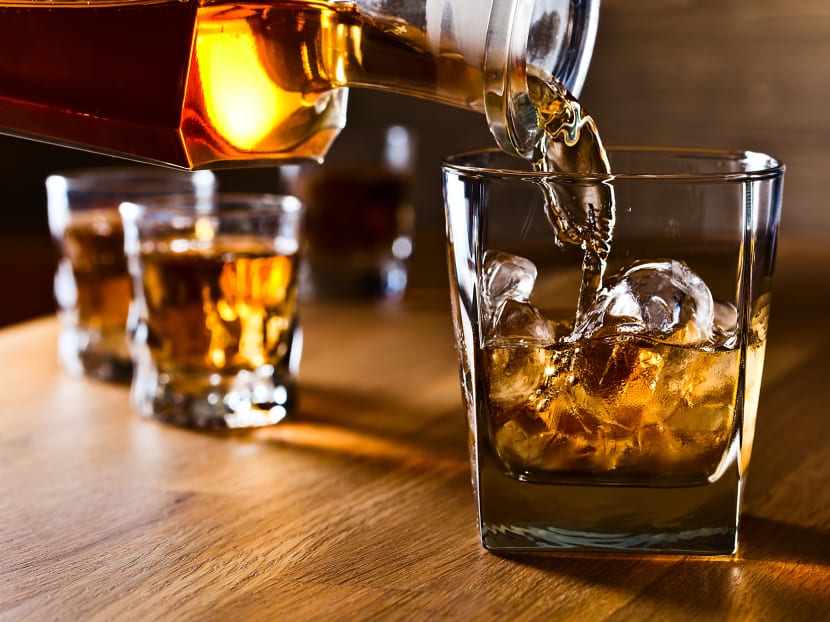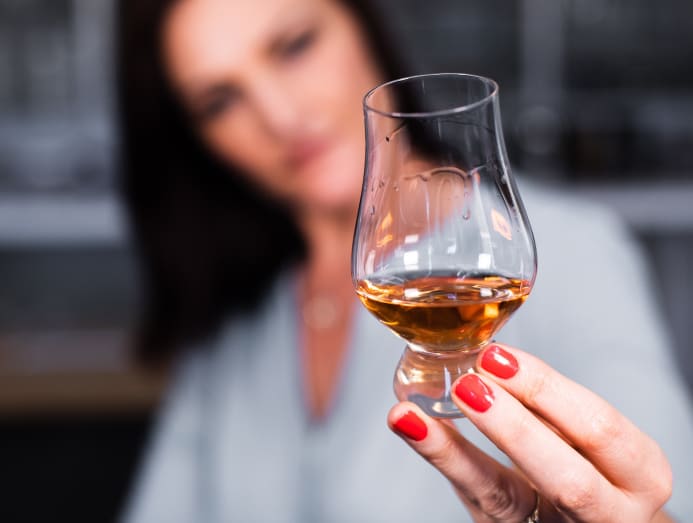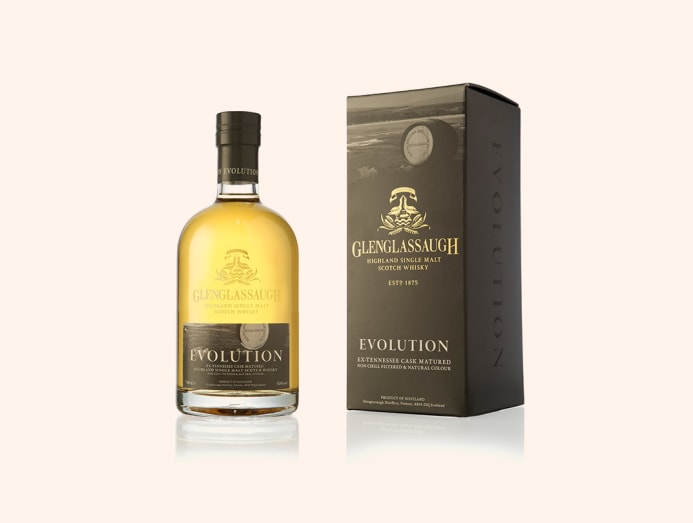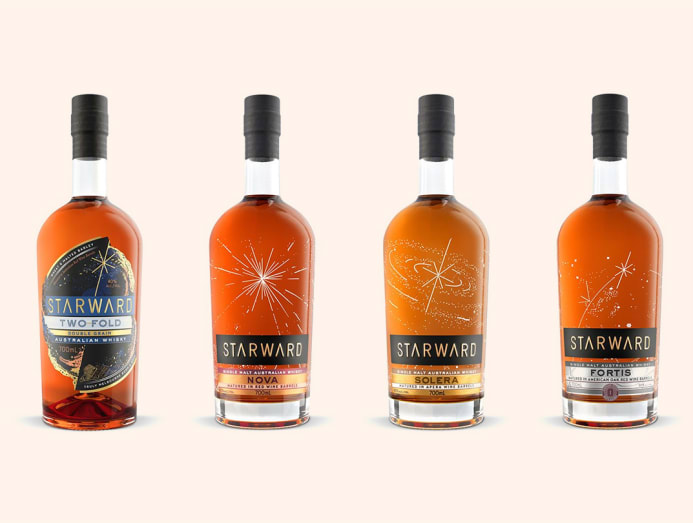Whiskies with no age statements - are they of lower quality?
Age is not everything, or is it? We find out from whisky experts if Non-Age Statement (NAS) whiskies are inferior to aged whiskies.

In recent years, an increasing number of whisky producers have been releasing Non-Age Statement (NAS) whiskies, made from a blend of single malts of different ages, usually younger ones. (Photo: iStock)
For decades, whisky makers and marketers have been dispensing the “old is gold” maxim to drinkers: Look at these half-century old single malts breaking records at auctions; discover these rare sips from a bygone distillery; and check out the complexity of this 20-year-old dram vis-a-vis its younger variant.
It’s a collective pitch – the media has also been part of this voice (mea culpa) – that has largely worked, sneaking its way into the drinker’s subconsciousness like a Jedi mind trick.
For the average consumer who is looking for a bottle of Scotch but isn’t familiar with the different regional styles of whisky, making the purchasing decision largely boils down to one thing – the spirit’s age. Between a 12-year-old and a 15-year-old, he’d pick the latter if his budget allows.
In recent years, an increasing number of whisky producers have been releasing Non-Age Statement (NAS) whiskies. NAS whiskies are spirits made from a blend of single malts of different ages, usually younger ones.
Unlike your usual age statement whisky, which states the youngest whisky in its mix – for example, a 12-year-old would include older whiskies in its blend – a NAS whisky doesn’t carry an age statement on its label and thus its namesake. Apart from the fact that it has been aged for a minimum of three years in casks as per Scottish law, the age of the NAS whisky is anyone’s guess.
It’s a category that seems to mock the whisky industry’s age-old reliance (no pun intended) on selling the symbiotic connection between age and quality. Whisky producers now find themselves downplaying the (lack of) age statements on the marketing copy of their NAS drams.

“It’s more important to judge the liquid, not the label.” – Emmanuel Dron
TO SAVE STOCKS, BRING FORTH THE NAS
The NAS whisky was born out of market forces: Increasing global demand for whiskies in the past decade meant that distilleries face decreasing stocks of mature whiskies. (The pandemic hurt demand last year, though. The export value of Scotch whisky fell by 23 per cent in 2020, according to the Scotch Whisky Association.) To ease the stock gaps, whisky producers started introducing NAS whiskies.
“NAS does not always mean ‘young’, although the most recent NAS whiskies that are released are definitely young because of a lack of aged stocks,” said Chua Khoon Hui, owner of whisky establishment Quaich Bar.

Drinkers accustomed to enjoying whiskies with age statements would wonder if NAS whiskies are inferior in quality. But Chua said the “older is better” dictum is not always true for whiskies.
“A NAS whisky doesn’t mean it’s inferior to aged ones,” he said. “NAS whiskies give the master blender total freedom to create a whisky or taste profile that would suit the audience. An aged whisky just means [it’s giving] additional information, which makes the consumer feel more confident in buying it.”
Emmanuel Dron, director of whisky bar The Auld Alliance, said there’s no reason for NAS to be inferior to aged whiskies. “It’s more important to judge the liquid, not the label,” he said.
Dron highlighted that NAS whiskies are not a recent development, though. He noted the efforts of the much-respected late Italian bottler Silvano Samaroli, who released NAS whiskies in 1992 after anticipating that stocks of aged whiskies will dwindle. Today, Samaroli’s NAS spirits, which are available at The Auld Alliance, are recognised by drinkers as high-quality sips.

“A NAS whisky doesn’t mean it’s inferior to aged ones. NAS whiskies give the master blender total freedom to create a whisky or taste profile that would suit the audience.” – Chua Khoon Hui
CREATIVE EXPRESSIONS
Chua said NAS whiskies offer people “a lower entry level to try a brand and decide if they want to spend more to get the aged ones”.
Alex Yong, managing director of wine and spirits importer Malt & Wine Asia, shares the same sentiment.
“NAS whiskies help recruit new drinkers into the whisky category and provide more choices for consumers who want to explore new flavours and tastes,” said Yong, adding that the growing demand for single malts and rising prices of aged whiskies have contributed to the emergence of NAS whiskies.
“Many seasoned whisky drinkers were upset that their favourite aged whiskies were priced out of their affordability. Others had to go on a waitlist or be made to buy a bundle of other whiskies just to be allocated a bottle of their beloved [aged] dram,” said Yong. “Those who weren’t so lucky would start exploring whiskies from other brands or countries.”
He said there are two distinct groups of NAS producers – traditional Old World producers from Scotland, Ireland, US, and Japan, and New World producers from those outside of the former group.

“In recent years, New World whisky producers have contributed in some way to the growth of NAS whiskies,” said Yong. “These producers are perhaps just a decade old or newly established, so they don’t have the luxury of aged [whisky stocks]. Hence, they have to make their young whiskies attractive to new drinkers to stay afloat.”
Malt & Wine Asia carries NAS variants from Scottish producers Benriach, The Glendronach, and Glenglassaugh, as well as New World whisky maker Starward from Melbourne, Australia.
“We are seeing new NAS expressions coming to fruition such as various cask finishes and spirits [made from] diverse strains of barley or smoked with different peat levels,” said Yong. “For example, Starward has recently released its single malt whisky finished in casks that once held the distillery’s ginger beer.”
Yong said he is seeing more wine drinkers being attracted to Starward as some of its whiskies are aged in wine barrels that once held Aussie red wines like Cabernet Sauvignon and Shiraz.
“Many customers have fun trying to guess what varietal the wine cask held before it was used for the whisky,” he said.

“NAS whiskies help recruit new drinkers into the whisky category and provide more choices for consumers who want to explore new flavours and tastes.” – Alex Yong
DON’T LIE ABOUT YOUR AGE
Dron, however, is not comfortable with how some whisky producers would obfuscate the lack of age on their NAS labels. Let the buyer beware.
“The main issue for me with NAS whiskies over the last few years is you’d see a NAS whisky using the word ‘vintage’ on the label. It’s definitely a way to confuse the consumer and hide the fact that the whisky may be very young,” he said. “The producer then has the advantage of marketing the whisky as older than it really is.”
According to Dron, many distilleries in the 1960s to the 1980s also bottled very young single malts, such as Glen Grant 5 Years Old, Highland Park 5 Years Old, and Clynelish 5 Years Old.
“All these 5-year-old single malts were good to great whiskies,” said Dron. “We know that most NAS whiskies released nowadays are young, so why not just give the age of the whisky instead of trying to make consumers believe that they are older than they really are?”









